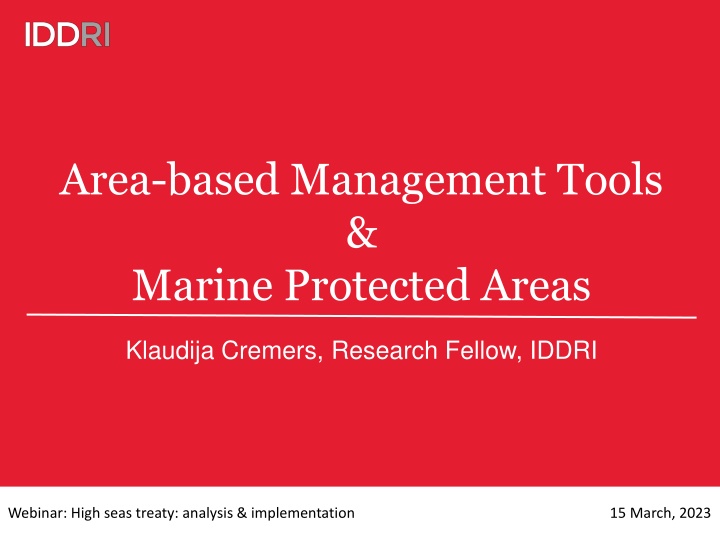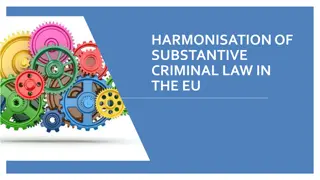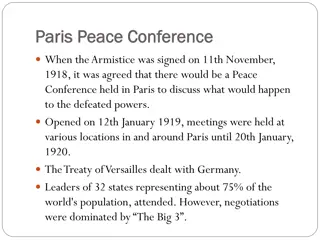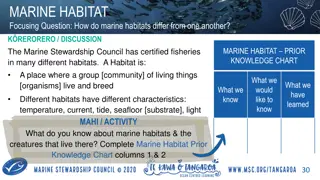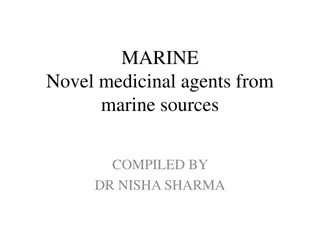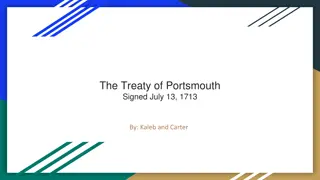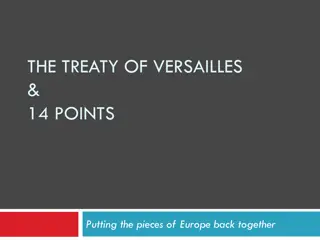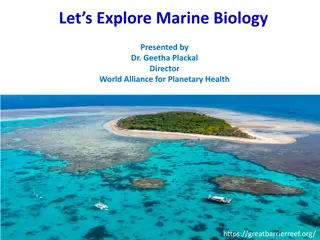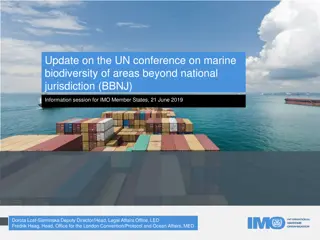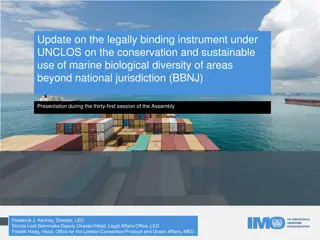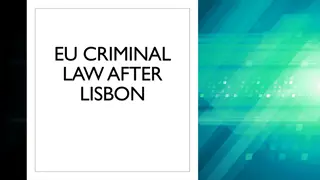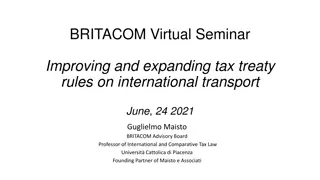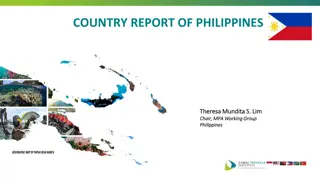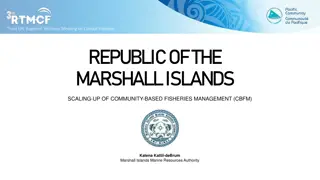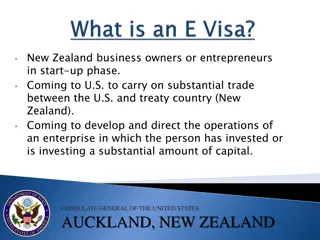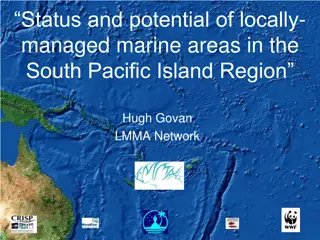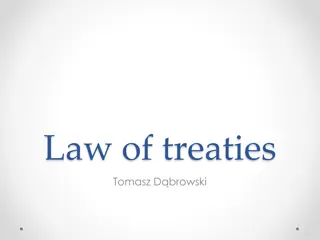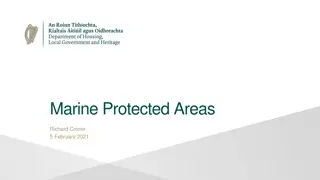Process Under the BBNJ Treaty for Marine Protected Areas
The process under the BBNJ treaty outlines the steps for proposing, reviewing, and implementing area-based management tools, including Marine Protected Areas. It involves submission to the Secretariat, public consultations, decision-making by the Conference of the Parties, and monitoring of implementation and effectiveness. The process emphasizes the inclusion of specific criteria in proposals, consultation activities, and the importance of monitoring and review for conservation and sustainable use objectives.
Download Presentation

Please find below an Image/Link to download the presentation.
The content on the website is provided AS IS for your information and personal use only. It may not be sold, licensed, or shared on other websites without obtaining consent from the author.If you encounter any issues during the download, it is possible that the publisher has removed the file from their server.
You are allowed to download the files provided on this website for personal or commercial use, subject to the condition that they are used lawfully. All files are the property of their respective owners.
The content on the website is provided AS IS for your information and personal use only. It may not be sold, licensed, or shared on other websites without obtaining consent from the author.
E N D
Presentation Transcript
Area-based Management Tools & Marine Protected Areas Klaudija Cremers, Research Fellow, IDDRI Webinar: High seas treaty: analysis & implementation 15 March, 2023
Process under the BBNJ treaty Preliminary review by STB Submit proposal to the Secretariat Develop proposal Proposal Outcome conveyed to proponent Review & resubmit to Secretariat Public Consultation consultations Proposal reviewed based on submissions STB sends recommendations to the CoP Decision-making CoP Decision Consensus or majority
Process under the BBNJ treaty Proposals must include: Geographic or spatial description of the area Criteria used to identify the area Human activities in the area, and their possible impact Description of state of the marine environment and biodiversity Description of conservation and sustainable use objectives Draft management plan: proposed measures, monitoring, research and review Duration, if any Information on consultation activities Information on existing ABMTs, including MPAs Relevant scientific input and, where available, traditional knowledge
Process under the BBNJ treaty After submission to the Secretariat: The Secretariat makes the proposal publicly available 1. Not undermining : If existing organisations have adopted measures, the CoP may provide further recognition or support for such efforts and take decisions on measures compatible with those adopted by existing organisations. The Scientific and Technical Body (STB) assesses the proposal 2. Consultations 3. The Conference of the Parties (CoP) will decide whether to adopt the proposal, ideally by consensus, but with the possibility of a majority vote. 4. If existing organisations have not adopted measures, the CoP can make recommendations. Entry into force 120 days after CoP meeting o Opt-out procedure o Requires justification o
Process under the BBNJ treaty Monitoring and review Parties shall report to the CoP on the implementation (reports will be publicly available) Emergency measures When a natural phenomenon or human- caused disaster has caused, or is likely to cause, serious or irreversible harm to marine biological diversity Relevant existing organisations shall be invited to provide information on the measures they have adopted Implementation Non-parties shall not be discharged from the obligation to cooperate STB shall monitor and periodically review ABMTs to assess their effectiveness and provide advice Following STB review, the CoP shall update ABMTs, as necessary
Implementation challenges Cooperation and coordination with existing global, regional and sectoral bodies not undermine Opt-out in voting Capacity needs assessment CBTMT Clearing-house mechanism Flag State responsibility Monitoring, control and surveillance as part of management plan Enforcement regime with authority and capacity to take action Sanctions: inform national legal and administrative systems https://www.nature.com/articles/s44183-022-00006-2
CONTACT Klaudija Cremers klaudija.cremers@iddri.org @CremersK IDDRI.ORG
